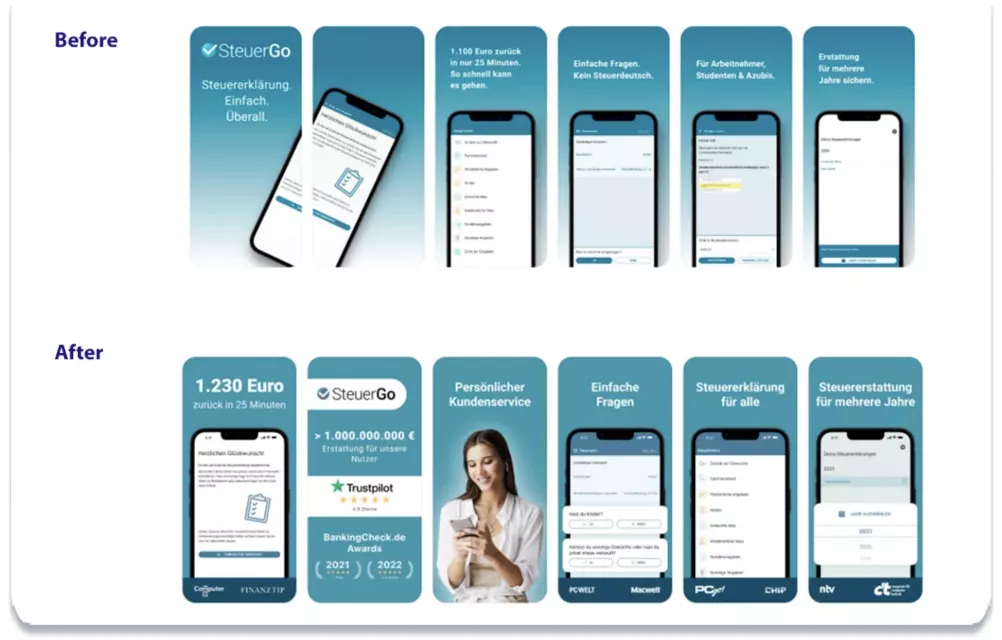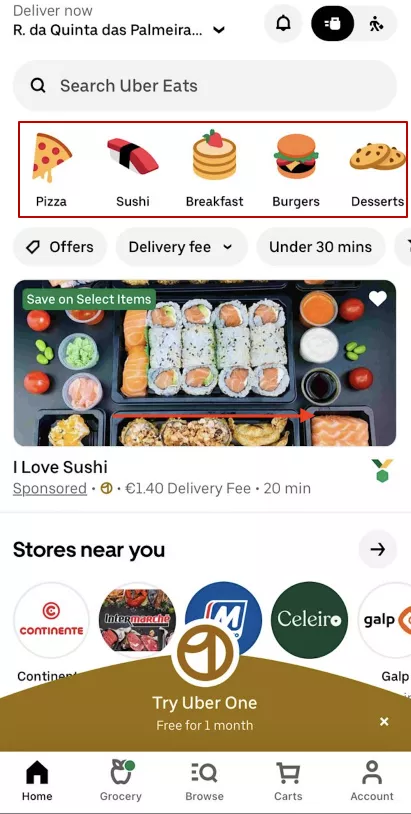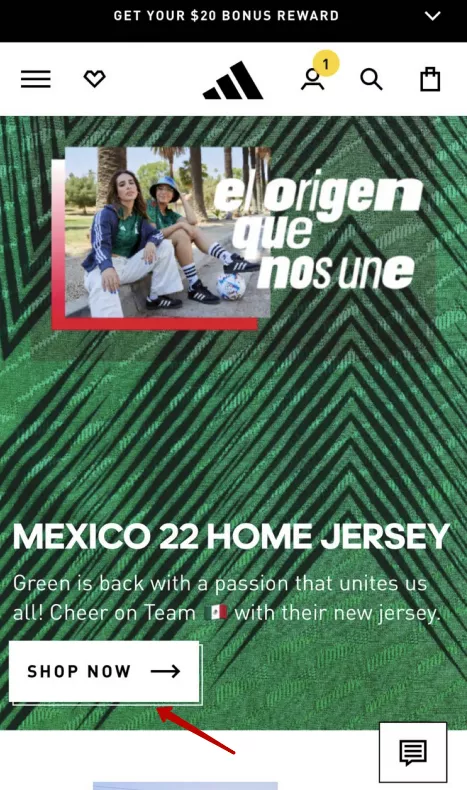The conversion rate of a mobile app shows how effectively the user interface contributes to the return on investment. Mobile conversion rate optimization (mobile CRO) is a must; it will improve the existing elements of the mobile version of a website or app and increase the percentage of potential customers.
In this article, I will tell you about the benefits of CRO and a step-by-step plan for its implementation.
What is mobile conversion rate optimization (CRO)?
Mobile conversion rate optimization (mobile CRO) is the process of increasing the percentage of desired actions performed by users in a mobile app or mobile version of a website. These actions include subscribing to a newsletter, placing an order, etc. CRO involves generating hypotheses about elements that need improvement and testing ideas through A/B testing.
- There are more than 3.8 billion smartphone users and over 3 million apps worldwide. Competition in the market is fierce.
- According to WebFX, 37% of consumers are more likely to purchase on a website that is well-adapted to mobile devices.
- A survey by StartupBonsai found that 70% of consumers prefer to feel like their needs are being addressed.
Benefits of mobile conversion rate optimization
Here are the reasons why businesses should invest in mobile CRO.
- Increase return on investment (ROI). CRO will lead to improvements to the website, and this will attract more customers and increase ROI.
- Increase the lifetime value of existing customers. A CRO audit helps reduce the cost of customer acquisition by increasing the app’s or mobile version’s value to current users.
- Improve user experience. Mobile CRO implementation involves analyzing human behavior. Problem areas can be quickly identified and optimized.
- Increase conversion and revenue. By implementing CRO strategies, companies can identify and remove potential barriers to conversion for mobile users. This positively impacts key business metrics, such as average order value (AOV) and cost per acquisition (CAC).
- Reduced bounce rate. Users are more likely to explore multiple pages if a website has a convenient and intuitive structure. This reduces the likelihood of them immediately returning to the search results.
How to calculate mobile conversion rate
The mobile conversion rate is the percentage of mobile visitors who performed the desired action, such as buying a product or subscribing to a newsletter.
It is measured using the following formula:
The conversion rate reflects the overall effectiveness of the app, as well as the product and marketing strategies behind it. The higher the conversion rate of a mobile app, the more successful it is.
Conversions: micro and macro
Mobile conversions can be broken down into micro and macro conversions.
Macro conversions are actions that are directly related to the primary purpose of the app or mobile version of the website and the revenue it generates. For example, purchasing goods from an online store is a macro conversion. When optimizing a mobile app or a mobile version, you should pay the most attention to this type of conversion.
Micro conversions are less important and affect revenue indirectly. They include actions such as “add to cart,” “subscribe to the newsletter,” etc. Analyzing them provides a comprehensive understanding of the user’s interaction with the app or mobile version of the website.
There are two types of micro conversions.
- Process steps, which include steps taken on the way to a macro conversion: registering on the site, using search, filters, etc.
- Secondary actions indicate interest and potential for future macro conversions. For example, a newsletter subscription can lead to a purchase.
CRO focuses on macro conversions because they have a direct impact on revenue. However, if you see an opportunity to optimize micro-conversions with minimal effort, take it.
Step-by-step plan for mobile CRO implementation
Step 1: Implement mobile analytics
Mobile analytics tools can help you understand how users interact with the interface:
- Which elements are clicked and which are not
- At what stages do errors occur
- What happens in the UI when errors occur
- The paths taken by users on the mobile app or on the mobile version of the site
Useful tools for this step are Google Analytics, Mixpanel, and Adobe Analytics.
Step 2: Research conversion issues
Mobile conversion rate optimization (CRO) helps identify elements or processes that are hindering conversion rates. Let me tell you how to find them.
- Review analytics tool reports to gather information about user behavior. Pay particular attention to bounce rate, conversion rate, and time on page.
- Gather feedback from mobile users using surveys and feedback forms. Ask about their experience navigating the app, reasons for not performing the conversion actions, and suggestions for improvement. Useful tools for this are SurveyMonkey, Google Forms, TypeForm, and Qualaroo.
- Conduct usability testing with real users to observe their interaction with the app or mobile version. Pay attention to any friction points that hinder the conversion process.
- Analyze heatmaps and session recordings with Crazy Egg and Hotjar. They give you a visual representation of user behavior. Heatmaps will help you identify areas where people are not paying attention, while session recordings are valuable for identifying specific usability issues.
- Use Google PageSpeed Insights or GTmetrix to evaluate mobile page load speeds and identify opportunities for optimization.
- Use the Google Mobile-Friendly Test to ensure your mobile site or app is optimized for different mobile devices and screen sizes.
Step 3: Create a hypothesis
After identifying conversion issues, you should formulate hypotheses containing reasonable assumptions about how to solve them. A hypothesis has three elements.
- A clear statement of the identified conversion problem: “The mobile app checkout process has a high bounce rate.”
- Suggested changes that will improve the situation: “Simplify the checkout process by reducing the number of form fields.”
- The expected result of implementing the proposed solution: “A simpler checkout process will reduce the number of bounces by 20% and increase the overall conversion rate by 15%.”
Once you have formulated your hypotheses, identify which ones to prioritize. Focus on those with the greatest potential to increase conversions.
Step 4: Run tests
Testing allows you to verify hypotheses and make decisions to improve your conversion rate. There are two most common types of tests for mobile CRO:
- A/B testing compares two versions of a mobile page or element to see which performs better in terms of conversion (testing colors and sizes of buttons, calls to action, etc.)
- Multivariate testing simultaneously tests several variants of different elements to determine the most effective combination.
After selecting the test, follow these steps.
- Define key performance indicators (KPIs) to measure the success of the results. For a mobile CRO, these are typically conversion rate, bounce rate, average session length, and revenue per visit.
- Make sure the sample size is large enough to produce statistically significant results and that the test is long enough to capture different user behaviors and how they change over time.
- Based on your hypotheses, create variations of the elements you want to test. Make sure each variation is different enough to provide meaningful insights.
- Use testing tools like Optimizely or VWO (Visual Website Optimizer) to set up and run your tests.
- Avoid simultaneously running multiple tests on the same page or element, as this leads to conflicting results and makes it difficult to determine the impact of each change.
- Continually monitor the progress of the tests to ensure they are running smoothly.
Step 5: Analyze the results
In this step, you determine the statistical significance of the test results. This ensures that any differences found between variants are not random. Most testing tools provide statistical significance calculations to help you accurately interpret the results.
Next, look for statistically significant differences in conversion rates or other important metrics between the control and experimental groups. Look for patterns and trends in the test results to determine the elements or changes that are driving the conversion rate improvements.
Also, analyze secondary metrics such as engagement rate, page load time, and click-through rate to get a more complete picture of user behavior and experience.
Case study: SteuerGo, a mobile tax return preparation app, had a low conversion rate from impressions to installations. RadASO took the following steps to solve this problem:
- Researched the niche of the main competitors.
- Analyzed user feedback on the application and identified its key advantages, which were convenience, intuitive interface, and prompt support.
- Brainstormed with the team on how to improve the graphics of the application.
- Suggested changing the texts and highlighting the information about the amount the user will receive after completing the declaration.
- Added brand awards and benefits to one of the first screenshots.
- Created a technical brief for the designer to implement the plan.
- Launched A/B tests that confirmed the hypotheses.
The results: On the App Store, conversion increased to 40 installs per month and 500 per year. On Google Play, conversion increased to 230 monthly installs and 2,800 yearly.
The most popular ways to improve mobile conversion
There are a few proven methods to quickly and reliably increase your conversion rate.
Improve navigation features
Create a clear and intuitive navigation menu that can be accessed from all pages of your mobile site or app. Use familiar navigation patterns so that users can quickly find what they want.
Make it touch-friendly
Keep buttons and links large and well-spaced to make them easy to touch. Use visual cues, such as shadows and animations, to indicate interactivity.
Avoid using small text links and buttons that are difficult to click accurately on small screens.
Add intuitive CTAs
Use clear and concise calls to action. They should indicate the action users will take when they click the button.
Experiment with different CTA button placements, sizes, and designs, and use A/B testing to determine the most effective options.
Conclusions
- Conversion rate optimization (CRO) on mobile devices aims to increase the percentage of desired actions taken in an app or on the mobile version of a website, such as subscribing to a newsletter or placing an order.
- The benefits of mobile CRO include higher ROI, increased customer lifetime value, improved user experience, increased conversion rates and revenue, and reduced bounce rates.
- When optimizing, focus on macro conversions. These are actions that are directly related to the primary purpose of the app and its revenue.
- The optimization plan includes implementing mobile analytics, researching potential problems, creating hypotheses, running tests, and analyzing the results.
- The most popular ways to improve conversion are to improve navigation, increase touch friendliness, and add intuitive calls to action.
If you’re looking to improve your app’s performance and maximize conversions on mobile devices, consider working with a specialized Mobile Conversion Rate Optimization Agency that can help you turn visitors into loyal customers.
Recommended theme posts
Related Articles
Display Advertising Effectiveness Analysis: A Comprehensive Approach to Measuring Its Impact
In this article, I will explain why you shouldn’t underestimate display advertising and how to analyze its impact using Google Analytics 4
Generative Engine Optimization: What Businesses Get From Ranking in SearchGPT
Companies that master SearchGPT SEO and generative engine optimization will capture high-intent traffic from users seeking direct, authoritative answers
From Generic to Iconic: 100 Statistics on Amazon Marketing for Fashion Brands
While traditional fashion retailers were still figuring out e-commerce, one company quietly revolutionized how U.S. consumers shop for everything from workout gear to wedding dresses








